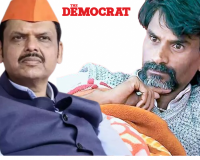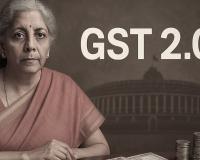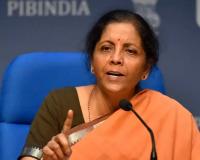- Editorial
- Re-inventing Congress
Re-inventing Congress
Indian National Congress is surely at the crossroads today. It was founded on December 28, 1885, initially to be a wise counsel for the British rulers of India about issues of the people. It outlived its mediatory role soon and led to a force of non-cooperation movement based on principles of non-violence under the leadership

Indian National Congress is surely at the crossroads today. It was founded on December 28, 1885, initially to be a wise counsel for the British rulers of India about issues of the people. It outlived its mediatory role soon and led to a force of non-cooperation movement based on principles of non-violence under the leadership of Mahatma Gandhi, and various shades of more radical movements gradually moved away from Congress. Post independence, it became the first political force to come to rule though Gandhi, never a Congress member himself but its ideological mentor, once wished it to be dissolved after gaining independence. Post first general elections in 1951-52, Congress naturally came to dominate the politics of the nation with the communists, the Jansanghis and Swatantra Party being the forces in the opposition.
Since then the broad paradigm of Congress was based on social justice and inclusion, broad coalition of various social-caste-religious forces, capitalism with welfare policies of the state, accommodation of various and even conflicting pressure groups, all being led by the over-arching Gandhi-Nehru family. Over time, challenges mounted, and responses hardened. So Congress led to Emergency, faced setback thereafter, returned to power as opposition could not stick together, and later degenerated into a victim of alliance pressures and rampant corruption.
And in this entire journey of seven decades, Congress-centric Indian polity has gradually turned into Sangh-centric polity with majoritarianaspirations and political power consolidating, which first resulted in a full term of PM Atalbihari Vajpayee, and now at its peak, with the second resounding victory of PM Narendra Modi led BJP, the political front of the Sangh. Consequently, Congress stands at a queer crossroads: some asking for its dissolution, some finding it incompetent to take the opposition space full scale, some considering it the only potent force for a meaningful opposition, and some calling for a total revamp of Congress from top to bottom.
This columnist is of the last opinion above. A strong Congress, albeit with a complete revamp of its organization, rationale, goals, objectives, strategy and tactics, is a must for the survival of multi-party competitive liberal democracy in India, but this must happen with an enormous course-correction by the party. What is that course correction?
To begin with, let’s start from the top.
Leadership must surely be made democratic and hence current party president and the scion of the Nehru-Gandhi family, Rahul Gandhi, must resign from his post and be the leader of the opposition in the LokSabha. This is the first major surgery as the organization becomes open to shared leadership going beyond a dynasty, and Rahul gets his first strong grounding in Parliamentary processes. Shashi Tharoor can be his deputy in the Lok Sabha. A leader in the 60s, can be made the President with vice presidents and general secretaries in 40s, 50s and 60s from all over the nation.
Second, Congress must make a shadow cabinet, a la British type, where each ministry of the government of India will be shadowed by a Congress leader with expertise or experience in that field, and will be the focal point of any media deliberation or public positioning on matters related to that ministry. This will bring in a pool of intellectual capital for future good governance and help Congress position itself in equal footing with BJP at least in policy perspectives, alternative ideas, action points, etc.
Third, Congress must make a principle of all leaders above 75 to be in the National Advisory Cell, and executive roles at every level and every mass front given to people below 75, and largely those in their 40s and 50s to make a complete generational shift, not just at Rahul’s level. If that makes a few old-timers leave the party, so be it. The party cannot go any further below. It is already at its nadir.
Fourth, Congress must be clearly putting forth, creatively and repeatedly, what it stands for, its core mission, vision, values and principles of its post independence governance and organization, which are in sharp contrast to the Sanghi world-view. The 2019 election manifesto of Congress brings forth the Congi world-view sharply clear and that, with necessary replenishments, needs to be communicated down the line. Even the current governments it runs (four states directly and one state with JDS) should start implementing the manifesto promises and steps that which can be practically done at the provincial levels.
Fifth, Congress needs to revamp its state and district committees, allow young leaders led various committees to take charge, involve a large number of professionals and socially active workers in its operations at various levels and develop district-wise development plans through local development dialogues and state level manifestos similarly. Let shadow cabinets for all ministries evolve in each state not ruled by the Congress.
Sixth, Congress should not shy away from partnerships with other established local parties (with SP-BSP in UP, with RJD-Left in Bihar, with JMM-RJD in Jharkhand, with NC in Kashmir, with AIUDF in Assam, with AAP in Delhi-Haryana-Goa, with DMK in TN, with TDP in Andhra, with BSP in MP and Rajasthan, with NCP-MNS in Maharashtra, with TMC in Bengal, with BJD in Odisha). Such tie-ups will not weaken the Congress, rather help it to create a broad-based left and democratic alliance against the BJP and Sangh apparatus which are common political rivals of all at this point of time in Indian political history. It needs a great statesmanship and negotiation skills to create first a combined force of people’s movement, and the electoral alliance, and Congress must take the leadership to make Indian democracy survive and thrive.
Seventh, the role within and outside the Parliament has to be extremely constructive for Congress. Oppose the government where you have to, but with an alternative blueprint, support the government where you feel so, but with your caveat and caution. And, in both situations, take other opposition parties along with you. The alternate vision, and an aspirational one, must be visible for the people to every measure the government takes. Politics of mere protests has outlived itself. Also, alongside, national committees for administrative reforms, police reforms, judicial reforms, electoral reforms, security strategy, information technology strategy, banking reforms et al need to be formed to bring out concrete proposals in each of these and disseminate the same. Electoral reforms and technology-specific study of EVMs etc are immediately needed.
Eighth, Congress must address the question of patriotism and nationalism, taking it to a cosmopolitan multi-cultural plane from the majoritarian one today by BJP. And not depending on political alignment by castes, which is degenerating, Congress must focus on political alignment by policies, ideas, aspirations. Nationalism beyond religious animosity, by development and global leadership and acceptance of Indian soft power, is the need. Congress must remember that India was a bigger recognized leader of the Third World and Non-aligned Movement even before it became an economic power.
Ninth, Congress has miserably failed in communication ammunition, though tried hard. It, hence, needs to revamp its information cell, nurture an intelligentsia to disseminate the alternate vision it represents, use the social media at all levels more vigorously, have its own directly controlled messaging channel through whatsapp, social media, mainstream media, et al. It must invest in training in communication at different levels, and should strongly oppose all forms of earlier entitlements, assumptions, functional inefficiency. Twenty-first politics needs management and branding to be applied to social good in good measures.
Finally, some half a million trained and committed RSS work-force thatensured the audacious victory of BJP this time. Congress needs to create half a million strong Seva Dal and train them in democracy, leadership, election management, communication management at various levels, along with generating funds at grassroots. Without an organization at the bottom, politicking at the top makes no impact.
Lifeline of a democracy is the role played by a constructive opposition, and Congress needs to rise up to the occasion for this.
The author is a media academic, regular columnist and an active participant in TV debates in India.













